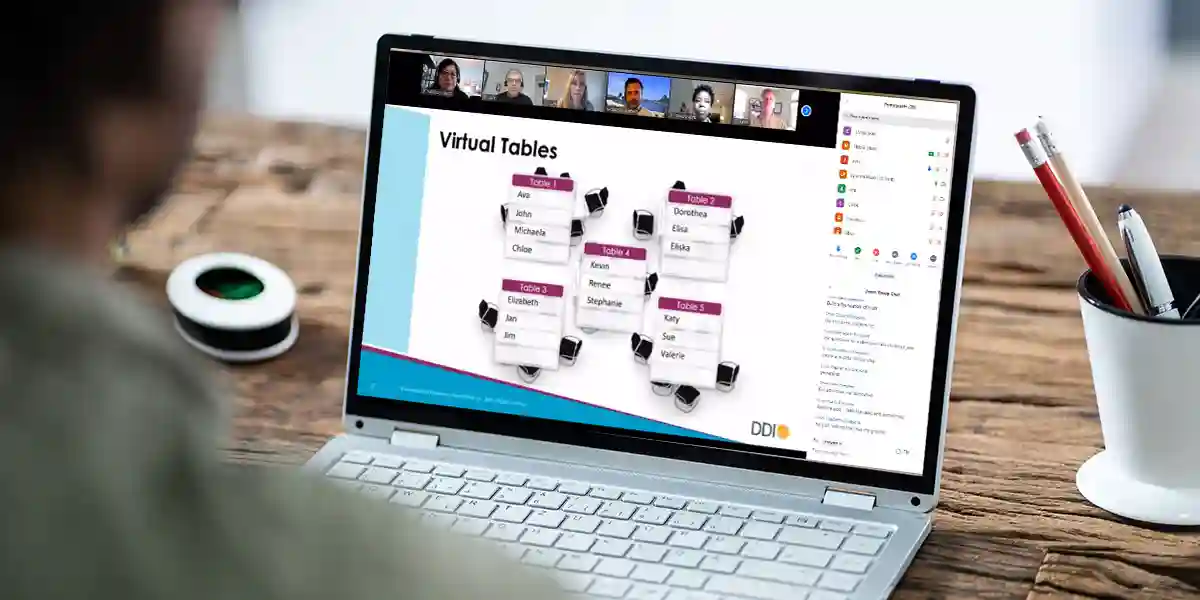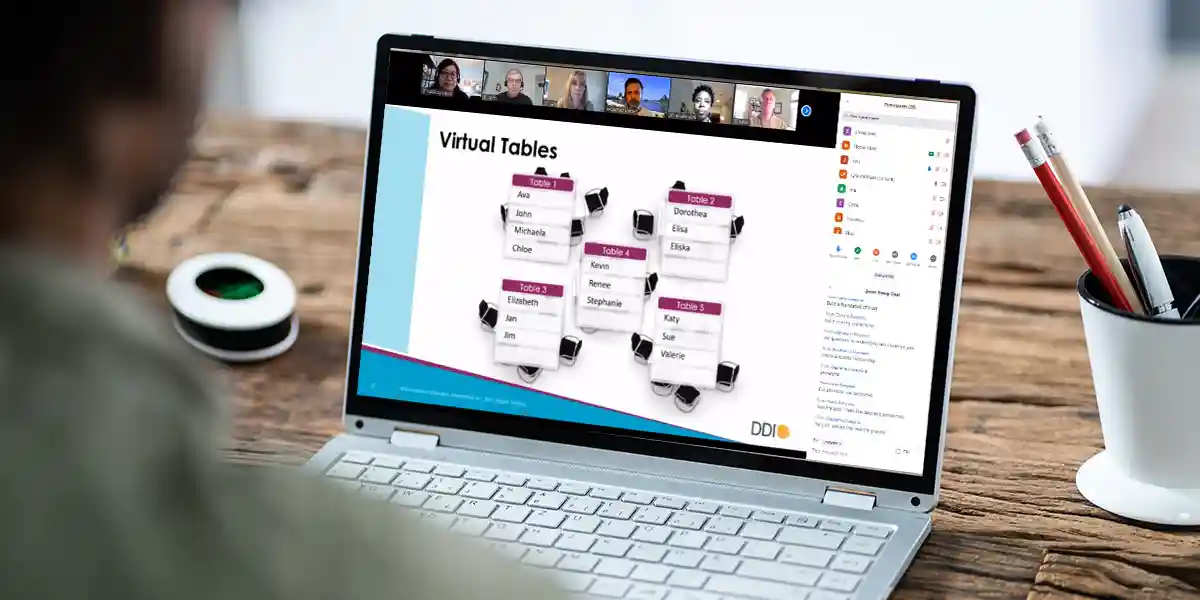If the latest news is any indication, it may be a long time before I see you all in the classroom again. Of course, that doesn’t mean that companies are stopping learning. They’re just switching to digital formats. But in the past weeks, it’s clear there’s a lot of confusion around the different digital options. And one in particular has been particularly unclear: The meaning of virtual classroom.
If you do a Google search of the meaning of virtual classroom, you get about 229 million results. Here are a few common definitions:
- A live webinar
- Education using a robot
- Learners going through online content at their own pace
- Online course using internet technology
- Collaborative learning
Obviously, there’s no clear definition. Some of these are accurate. Others? Not so much. (Although I’ll admit I’m curious about the option for a robot teacher.)
But there’s real urgency to understand what a true virtual classroom is. Because it can radically change the way you think about developing leaders.
What It’s Not
“Learners going through online content at their own pace” is an interesting description. But it’s actually a better description for other types of online learning, such as eLearning or web-based training. Usually, these types of learning are enabled by technology and are accessed through a learning management system.
The key here is the phrase “at their own pace.” Also called “asynchronous learning,” you can complete these courses on your own. They’re great for individual learning, especially if you’re trying to fit learning into a busy schedule. But it’s one of the big differences with a virtual classroom, which is done live with your colleagues.
Many also describe Massive Open Online Courses (MOOCs) as a virtual classroom. These course feature on-demand lectures, videos and tests, so they can meet the requirement to be done in real-time as a group.
The difference? They lack real-time interaction. It’s not so different than watching TV. You’re all tuned in at the same time, but no one is talking to each other.
Webinars Are Different
Like MOOCs, people often mistake webinars for a virtual classroom. But a well-designed virtual classroom shouldn’t be anything like a webinar.
Webinars are a way to share information in a “one to many” format. While they often have some interactivity, such as chat or polling, it’s usually limited. Participants can’t see each other. They can show up late or check out early. And there’s no sense of urgency or commitment.
Don’t get me wrong. Webinars limited to one hour are great for keeping on trends and thought leadership. But honestly, when I sign up for them, I usually just listen to the recording later. I don’t get much more out of it by attending live, so I might as well do it on my own schedule.
What Is a Virtual Classroom?
Now knowing what it isn’t, it’s easier to define the meaning of virtual classroom. A virtual classroom is a live online learning experience, led by an instructor. It’s also synchronous, meaning that people participate in the experience together at the same time. Most importantly, it should be collaborative. That means there should be a lot of activities and engagement with the instructor. Furthermore, the learners should have the chance to break out into smaller groups to connect and practice with one another.
Notice one key thing: If I removed the word “online” from this description, it would be the same as a face-to-face classroom experience. So when virtual classroom is done well, it should offer the same positive learning experience as an in-person course.
The Keys to Getting It Right
At DDI, we’ve been doing this for well over a decade. And we’ve learned several tips and best practices along the way to make it a success. Here are a few to help you get started:
- Educate and prepare learners. Before you do anything, you need to make sure everyone understands the format and the goals. You should set expectations that leaders will be active participants in the course. Reinforce that this is not a passive online course or webinar. Likewise, their managers should understand the content and commit to supporting learners.
- Create the proper environment, with the correct tools. Learners need a computer, internet connection, and all the workshop materials. They also need to be distraction-free, so they can fully focus on the experience.
- Use the right platform. Select a platform with a variety of functions to ensure an interactive and engaging experience. These features include chat, whiteboards, polling, annotation and feedback capabilities, and video. Breakout rooms play a big role in small group activities and skill practices. A simple technique like allowing learners to seat themselves at a virtual table creates a feeling of connection among learners.
- Train your facilitators. Before starting, carefully select and train your facilitators. Some of your best classroom facilitators may not take naturally to the virtual format. So it’s important to make sure that facilitators update their skills specific to virtual experiences.
- Engage a producer. A producer’s job is to manage the technology, while the facilitator focuses on participants and learning. They should work like a well-choreographed team. That way, learners can focus entirely on the experience, and not fiddling with the technology. You can learn more about producer training here.
It’s Time to Go Virtual
I started this blog talking about the confusion around the meaning of virtual classroom. Hopefully, I’ve answered your questions about what it is, and more importantly, what it isn’t. But most importantly, I hope it’s clear that virtual classroom can be a powerful learning experience that can connect leaders across distances, and deliver powerful results.
So don’t hesitate. Go ahead and take the classroom virtual.
Learn more about DDI’s virtual classroom experiences.
Janice Burns is Principal Consultant at DDI. She works with organizations around the world to achieve business results through strong leaders, and is an experienced presenter on a variety of topics, including the design and implementation of learning journeys and blended learning best practices. Her passion is to help frontline leaders get the most out of every minute they carve out for development. Janice is a consummate shopper, particularly for shoes, and loves to attend auctions with her husband.
Topics covered in this blog

